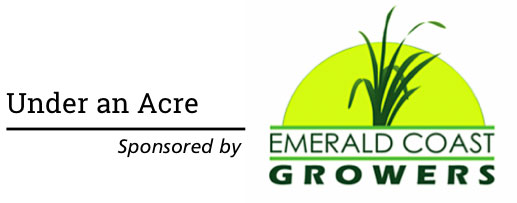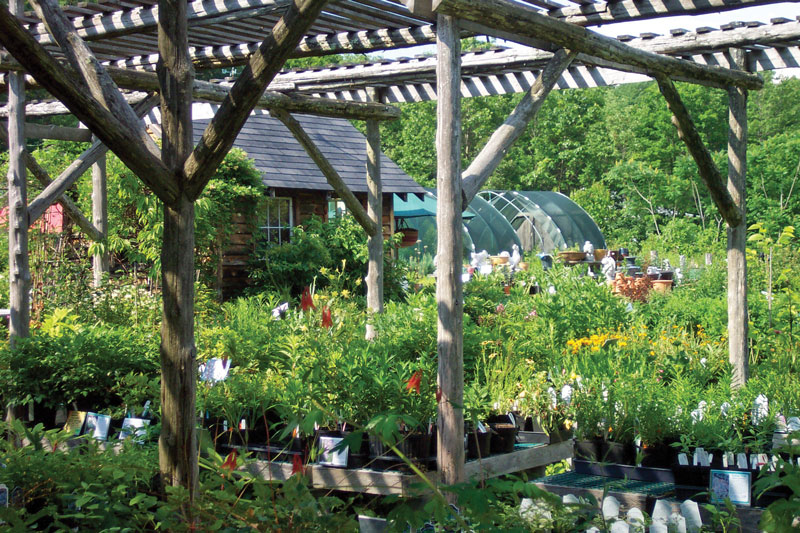3/1/2018
Returning Biodiversity to the Eastern Catskill Mountains
Anne-Marie Hardie

Within the foothills of the Eastern Catskill Mountains resides a nursery that celebrates and showcases the beauty and ecological benefits of native plants. Home to more than a thousand unique specimens, Catskill Native Nursery in Kerhonkson, New York, strives to provide the local community with both the plants and education to create an ecologically, sustainable environment.
The journey began 25 years ago when biologist Francis Groeters met herbalist Diane Greenberg. Diane had recently moved to the Catskill region from Brooklyn with dreams of homesteading and opening a flower farm or CSA. Francis, who was an insect ecologist, had left behind a career in academia to return to his home in Ulster County.
“The majority of the plants that I grew were to feed the insects that I studied,” said Francis. Passionate not only about plants, but their importance to ecology, Francis dreamed of leaving academia behind and applying his education to a different career path.
They were both avid gardeners, and through their conversations, Francis and Diane unveiled a common desire to create a biodiverse habitat for native flora and fauna.
“We were equally inspired by Sarah Stein’s book ‘Noah’s Garden’ and her transformation of traditional suburban gardens into a natural landscape,” said Diane. They became inspired to create a biodiverse habitat, but they quickly discovered that it wasn’t easy to find native plants in their region.
Recognizing this gap in their area, Diane and Francis aimed to not only source plants for their own home, but create a space where the local community could find these lost specimens and return them to their homes. Catskill Native Nursery opened its doors in the hot and dry August of 1999, providing a 2-acre environment for their local community to explore.
“We used to say this is the sort of nursery that a biologist or ecologist would create; I didn’t just want to grow pansies and petunias,” said Francis.
“I came here with a sophisticated view of biology and wanted to encourage people to do more ecological gardening.”
Word of the unique nursery spread and customers that were inspired to create their own meadow in lieu of tailored lawns gravitated into their doorway.
“We were never looking to have a large operation, as we wanted to keep the business manageable without too many employees,” shared Diane.
 Catskill Native Nursery is an information hub, with extensive signage on each plant, educational talks and workshops. Customers are provided with not only the plant care tips, but how the plant itself can bring forth new life into the environment.
Catskill Native Nursery is an information hub, with extensive signage on each plant, educational talks and workshops. Customers are provided with not only the plant care tips, but how the plant itself can bring forth new life into the environment.
“We usually try to provide the ecological perspective of the plant,” said Francis. “We don’t just talk about how beautiful each plant is, but how plants can provide habitats for wildlife.”
The nursery urges customers to begin to look for plants that are eye- catching and function well in their current ecology. This includes encouraging consumers to exchange the traditional invasive plants for native trees and shrubs that will contribute and protect a habitat.
“Some people come here and spend the entire day simply reading signs and taking down notes on how plants will function in their environment,” said Francis.
Today, most of the foot traffic into Catskills Native Nursery are customers enticed by their unique plant offerings and their education on how to create a truly sustainable, ecological landscape.
“When it comes to attracting butterflies, most of the emphasis is on the nectar plants to feed the butterflies, but you have to consider the host plants as well,” said Francis. “Caterpillars won’t feed on just anything; they need the native plants or herbs, such as parsley, to feed on.”
In fact, Francis suggests planting additional herbs and other edible plants so that you can both feed your family and the birds and insects.
With a keen interest in culinary and medicinal plants, Diane has added her own niche to the business, Green Witch Herbs. This includes an extensive culinary, medicinal and fragrant herb section, pottery, garden art and traditional non-native favorites, such as peonies, lavender and salvias.
“Our other focus is on edibles both native and non-native, and we carry many heirloom and hard-to-find fruits, like the paw paw and persimmon, that are popular with the ‘permaculture kids’ and local foodies,” said Diane.
With approximately 1,000 species under their roof, Catskills Native Nursery provides an extensive variety of native plants for their clientele.
“We get some really hardcore native plant people coming in and they are thrilled when they are able to find an obscure plant,” said Francis.
And if for some reason the customer can’t find their desired plant, Diane and Francis will source the plant for them. However, they discourage customers from putting invasive plants in their gardens, particularly those plants that have no wildlife value, such as pachysandra and forsythia.
Fully embodying the ecological lifestyle that they teach about, Francis is hoping to convert customers to create ecological landscapes around their home and also on their roofs. In fact, five years ago, Catskills Native Nursery put a green roof on their potting shed using native xeriscape.
“Xeriscaping helps to insulate the building, retain moisture and is aesthetically appealing,” said Francis. “Unfortunately, the cost often creates a barrier for customers to invest in this roofing style.”
Overall, Francis shares that Catskills Native Nursery isn’t just about gardening for wildlife, but for people as well.
“There’s an incredible diversity of North American plants, really diverse flora that have great ornamental value, but are never sold anywhere else. We love having those plants available for people to come see and purchase,” said Francis.
Diane and Francis have collectively achieved their dream, creating an ecological space where they can provide native plants and education to their community. Their aim is to provide exactly what a conventional nursery would, with one key difference: most of the plants are native. GT
Anne-Marie Hardie is a freelance writer/speaker from Barrie, Ontario, and part of the third generation of the family-owned garden center/
wholesale business Bradford Greenhouses in Barrie/Bradford, Ontario.